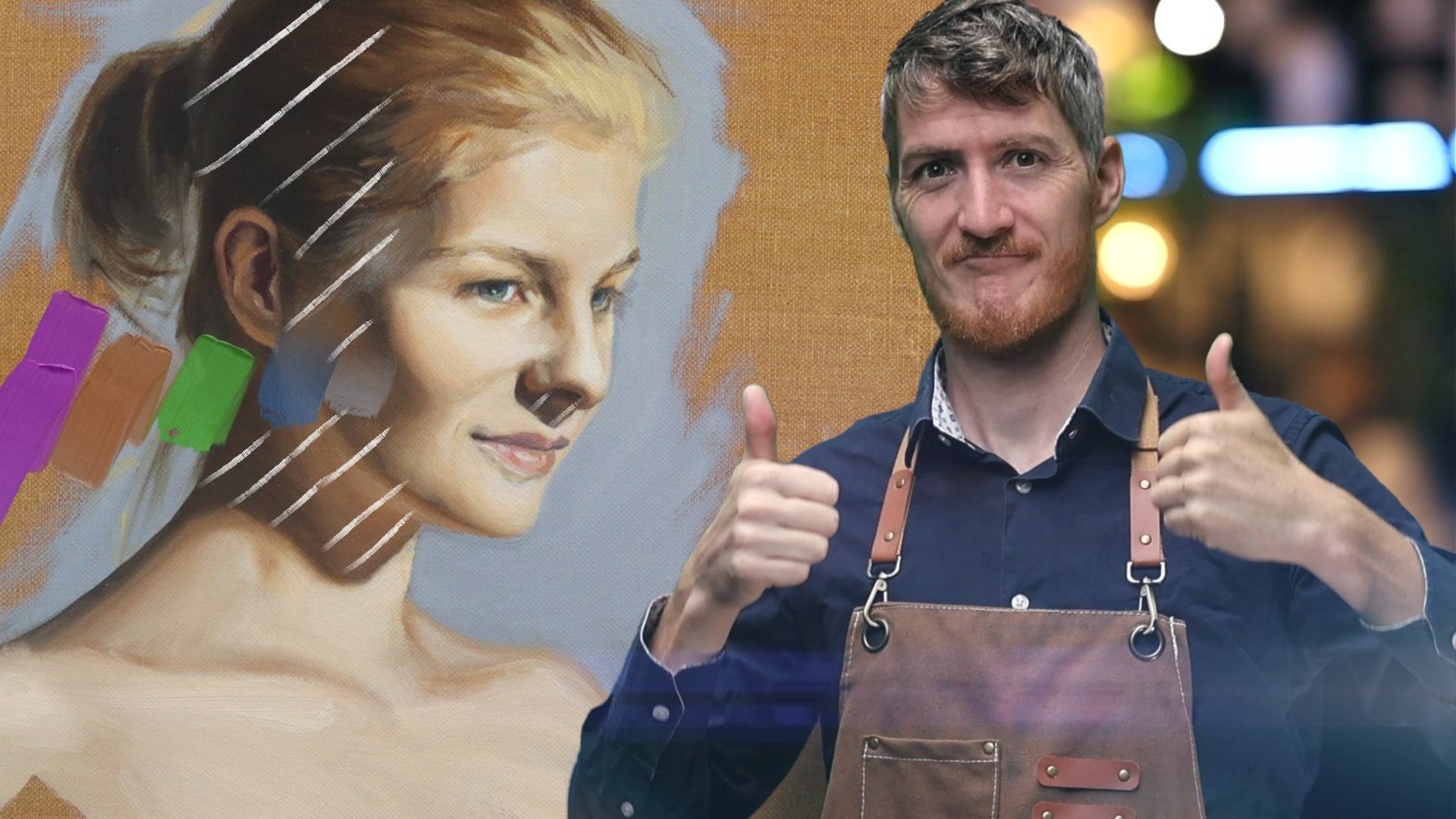Great portraits are not just about capturing a likeness, they are about sculpting the illusion of life. Lines and shapes are important. And by the way, the word portrait comes from the French portrait, which means "lines for" or "in favor of".
So lines are indeed important, but lines and shapes alone aren't enough for a good portrait. |
A portrait needs to convey the illusion of form, and that's what we'll be talking about today.
The Secret to Instantly More Lifelike Portraits
1. Planes vs. Features
When you look at a face, it's tempting to focus on the features for the portrait, right? The eyes, nose, the mouth, etc. and draw them symbolically with linear marks. In theory, this should be enough to convey likeness, but it always lacks a little something form.
Like when you take a photo, for example, and you trace it line by line, or you projected you didn't get a 100% accurate linear representation of your model. But strangely, it's never enough for good likeness. An empty outline, however accurate it is even mechanically exact, never fully conveys the true sense of likeness. A linear outline is always an empty vessel of the potential likeness.
To be a good painter, you need to think like a sculpture, not just like a draftsman.
The linear phase is always something useful in the beginning but you can't get stuck there ! lines are useful for proportions, for accuracy. But if you treat the features of the face as 2D shapes, your portraits will always stay flat.
2. What You Can Learn from the Asaro Head
the Asaro head designed by John Asaro is a simplified version of the human head, broken down into flat geometric and exaggerated planes to help you understand the structure and how the light interact with the structure of the face, the human face is a pretty complex thing, and from one model to the next, it's very difficult to understand exactly how it is made.
So the Asaro head has the benefit of reducing this complexity by making something kind of exaggerated, but also very simplified. Inhale as you just see all the flat planes of the face with clear angle changes. Now I know what you're going to say. You're going to say an actual face doesn't really look like that. But of course, you have to keep in mind this is a learning tool, right?
Each plane faces a slightly different direction and responds directly to the light in a little bit of an exaggerated manner, so that you can really see how it works. It's almost like the scaffolding of how the form of the head can be understood. This is not necessarily something that you want to copy from, or that you want to have as a reference.
This is more something that's going to tell you, okay, I should expect more light in this area. I should expect more light here on the top part of the jaw. So this is going to be most likely shadows on this side and shadows here. Now the idea is to have a look at your real life model and see if you can find some of the same things.
3. Paint Shadow Shapes with Intent
The Asaro head is a great way to understand the underlying structure, but it's just a tool, and it's an exaggeration in a way. In real life, what you're going to have to do is learn how to compose with the lights and the shadows as they appear in a certain context.
The context of your model, how the features of the face of this model look, and also how the light situation in this case interact with those features in the planes of the face. And what you want to do is you want to focus on how the shadows look specifically on your model, because shadows are expressed with elements in and of themselves, they're not just something to fill in with dark tones.
And if you treat shadows like empty voids, you are missing the real opportunity that they offer. Shadows are form. They are not a passive thing that just darken the activity. They communicate how the surface of the face turns into space. Every shadow tells a story. The story of your model, the story of your sitter, the story of their likeness.
Each shadow shapes tells a little bit of something about their likeness. Shadow shapes are expressive in detail, something about the person. They also tell something about you as an artist, because sometimes you might want to modify a little bit the shadow shape just to make it more artistic, look more cool, more expressive, more sculptural. Maybe this is when cheating a little pays off. If it makes the portrait more interesting, don't hesitate to chisel your shadow shapes every once in a while. So the idea is that instead of asking, is this shadow dark enough? Or how do I fill it with dark paint? You want to ask, what does this shadow tell me about this form that I want to express, and you as the artist, are in control of that?
And this is really cool.
More coming up this week on this topic...
And next Monday, no Newsletter but we'll be back the week after that !
▲ Make sure to be notified and follow me on all my platforms to see more about this topic.
- New Patreon Video every Monday, Tuesday and Thursday.
- Live on Twitch every Tuesday and Friday 9:00PM (gmt+1).
- New YouTube Video every Friday: it will be on the topic of this Newsletter!
Catching up with the Atelier
Here's what's been happening in the previous weeks...

Painting Assignment
Practice painting with this assignment.
|
|

Drawing Assignment
Practice drawing with this assignment.
|
Most recent YouTube Video

Until next time—joy and inspiration to you, my friends.